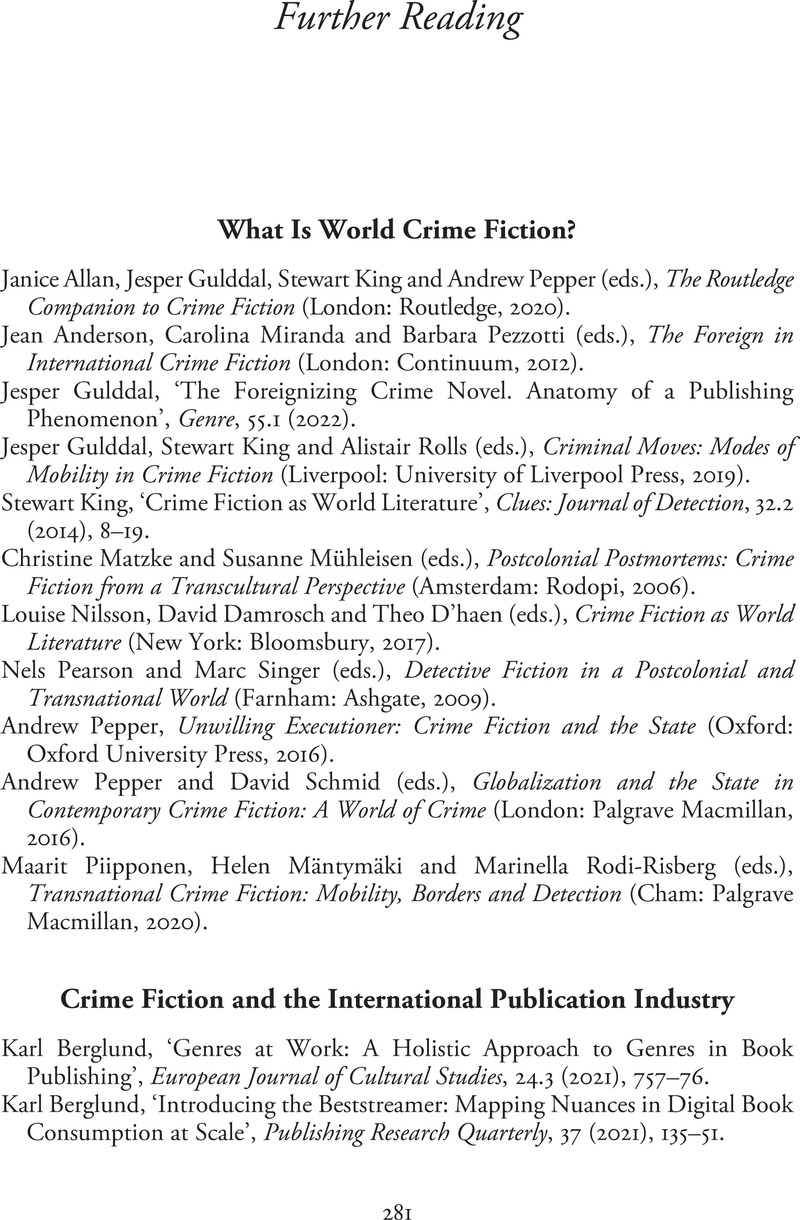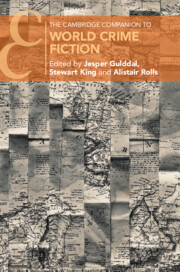Book contents
- The Cambridge Companion to World Crime Fiction
- The Cambridge Companion to World Crime Fiction
- Copyright page
- Contents
- Notes on Contributors
- Preface
- Chronology
- Chapter 1 What Is World Crime Fiction?
- Chapter 2 Crime Fiction and the International Publishing Industry
- Chapter 3 The Translation and Circulation of Crime Fiction
- Chapter 4 The International Crime Fiction Collection
- Chapter 5 Regional Crime Fiction
- Chapter 6 Women in World Crime Fiction
- Chapter 7 East Asian Crime Fiction
- Chapter 8 Crime Fiction in South Asia
- Chapter 9 Arab Crime Fiction
- Chapter 10 The Crime Fiction of Sub-Saharan Africa
- Chapter 11 European Crime Fiction
- Chapter 12 Scandinavian Crime Fiction
- Chapter 13 Iberian and Latin American Crime Fiction
- Chapter 14 World Crime Fiction in French
- Further Reading
- Index
- Cambridge Companions To …
- References
Further Reading
Published online by Cambridge University Press: 14 April 2022
- The Cambridge Companion to World Crime Fiction
- The Cambridge Companion to World Crime Fiction
- Copyright page
- Contents
- Notes on Contributors
- Preface
- Chronology
- Chapter 1 What Is World Crime Fiction?
- Chapter 2 Crime Fiction and the International Publishing Industry
- Chapter 3 The Translation and Circulation of Crime Fiction
- Chapter 4 The International Crime Fiction Collection
- Chapter 5 Regional Crime Fiction
- Chapter 6 Women in World Crime Fiction
- Chapter 7 East Asian Crime Fiction
- Chapter 8 Crime Fiction in South Asia
- Chapter 9 Arab Crime Fiction
- Chapter 10 The Crime Fiction of Sub-Saharan Africa
- Chapter 11 European Crime Fiction
- Chapter 12 Scandinavian Crime Fiction
- Chapter 13 Iberian and Latin American Crime Fiction
- Chapter 14 World Crime Fiction in French
- Further Reading
- Index
- Cambridge Companions To …
- References
Summary

- Type
- Chapter
- Information
- The Cambridge Companion to World Crime Fiction , pp. 281 - 289Publisher: Cambridge University PressPrint publication year: 2022



